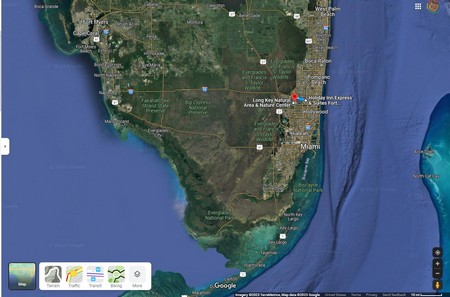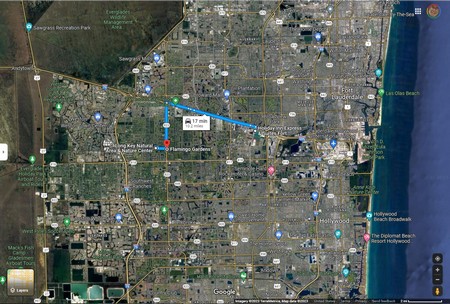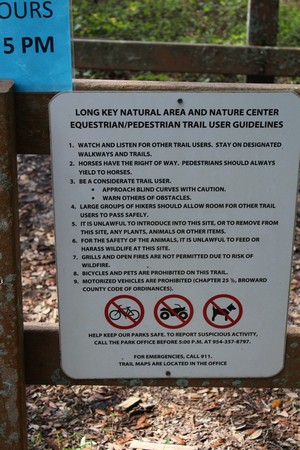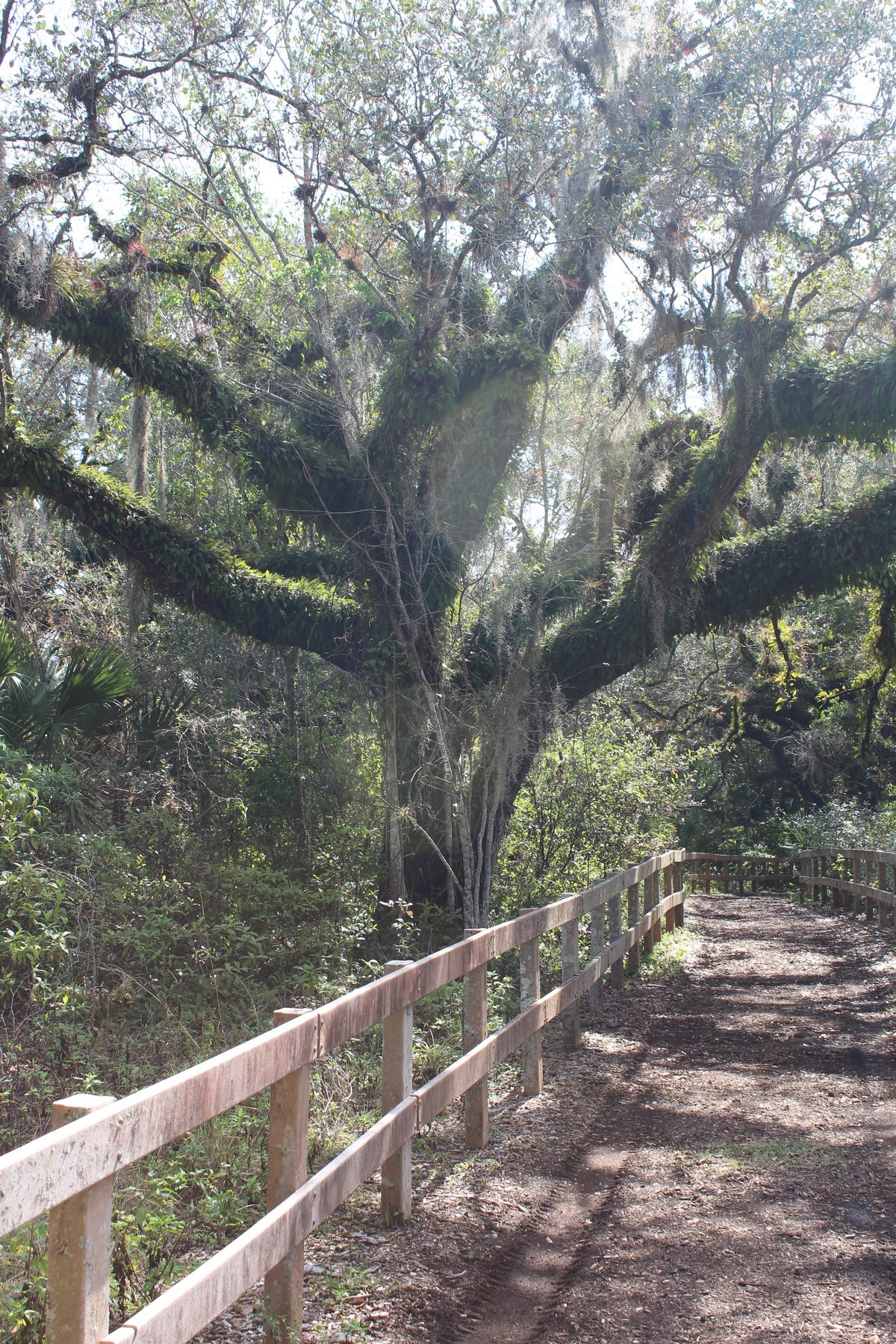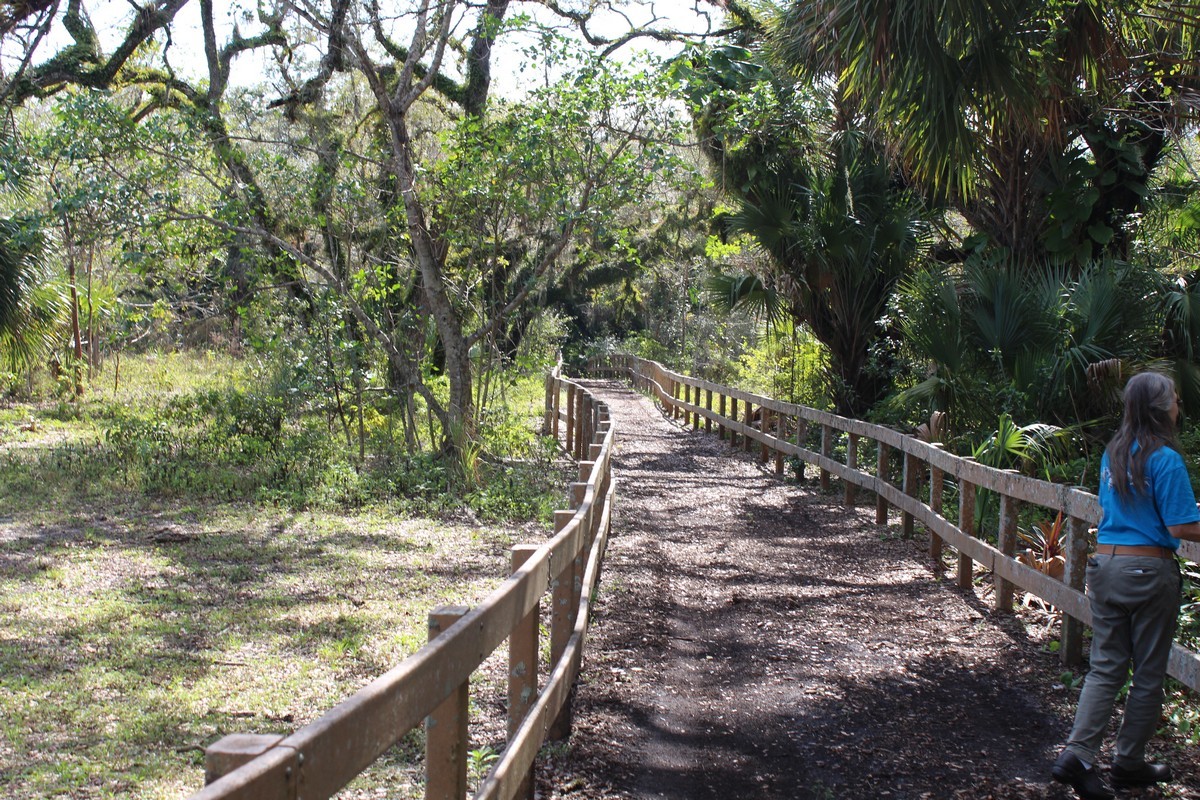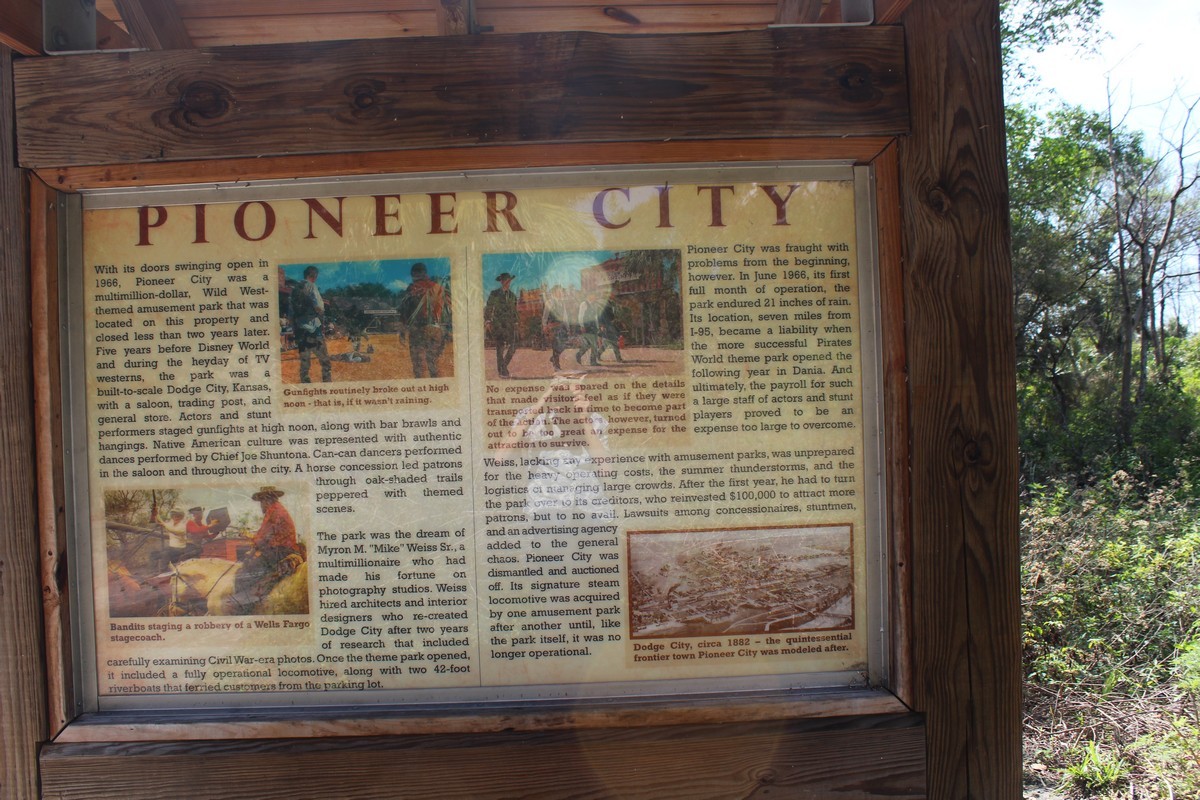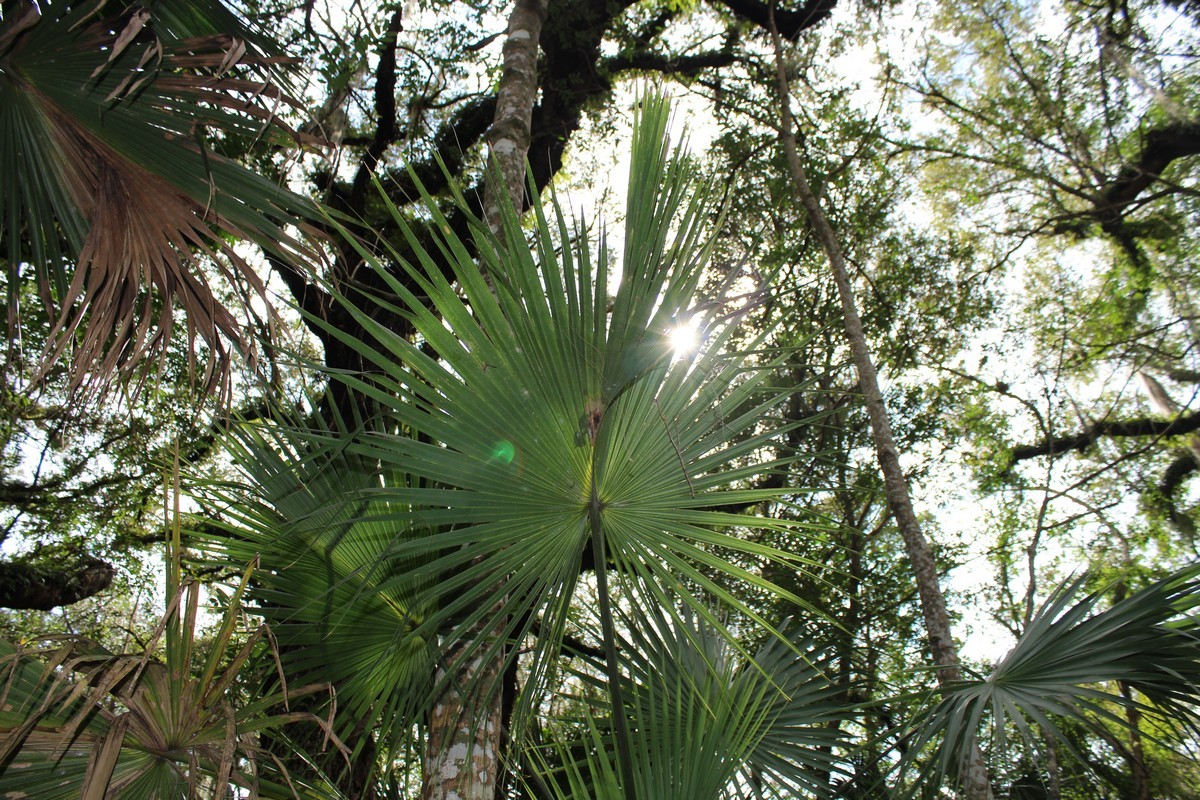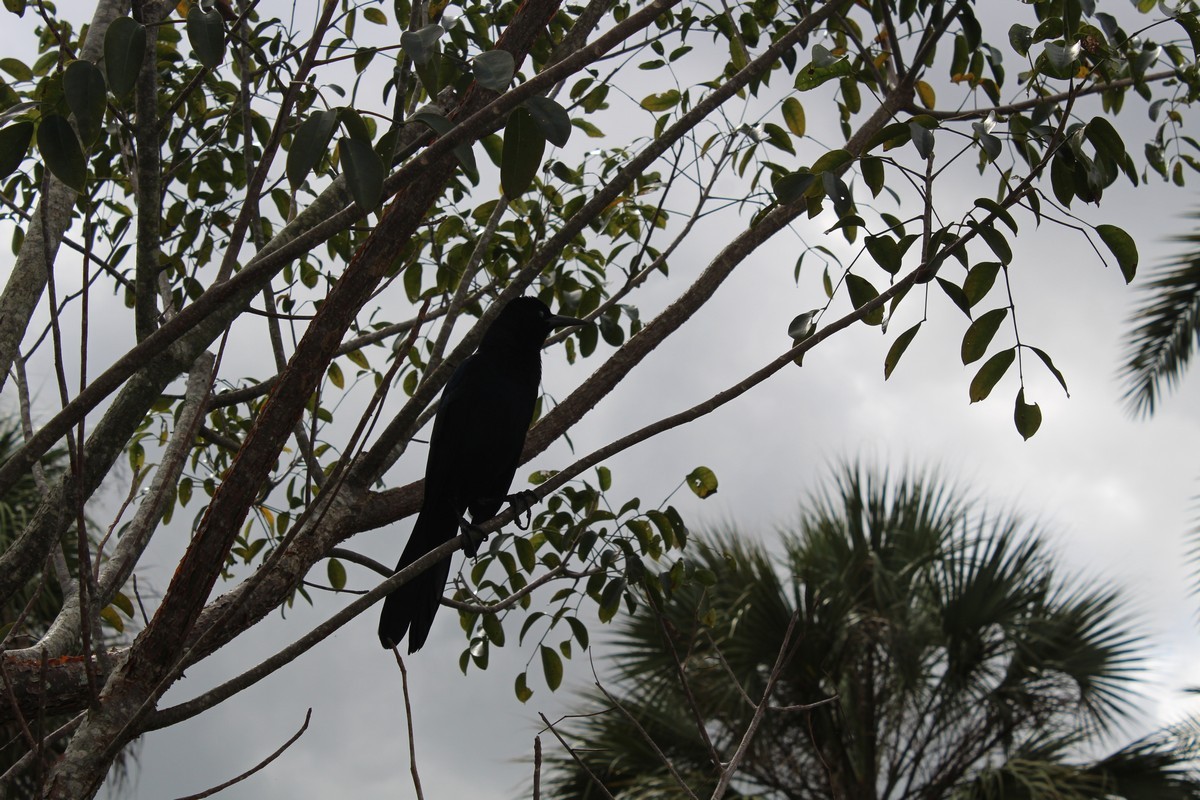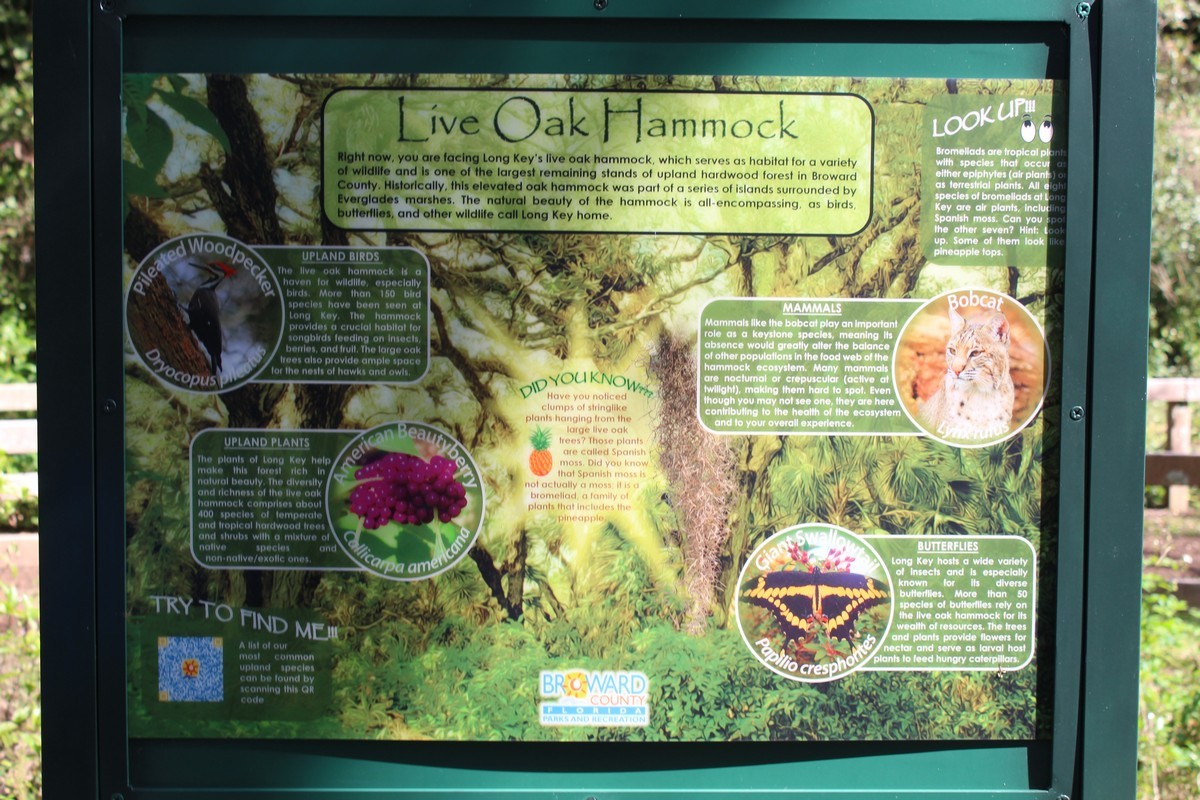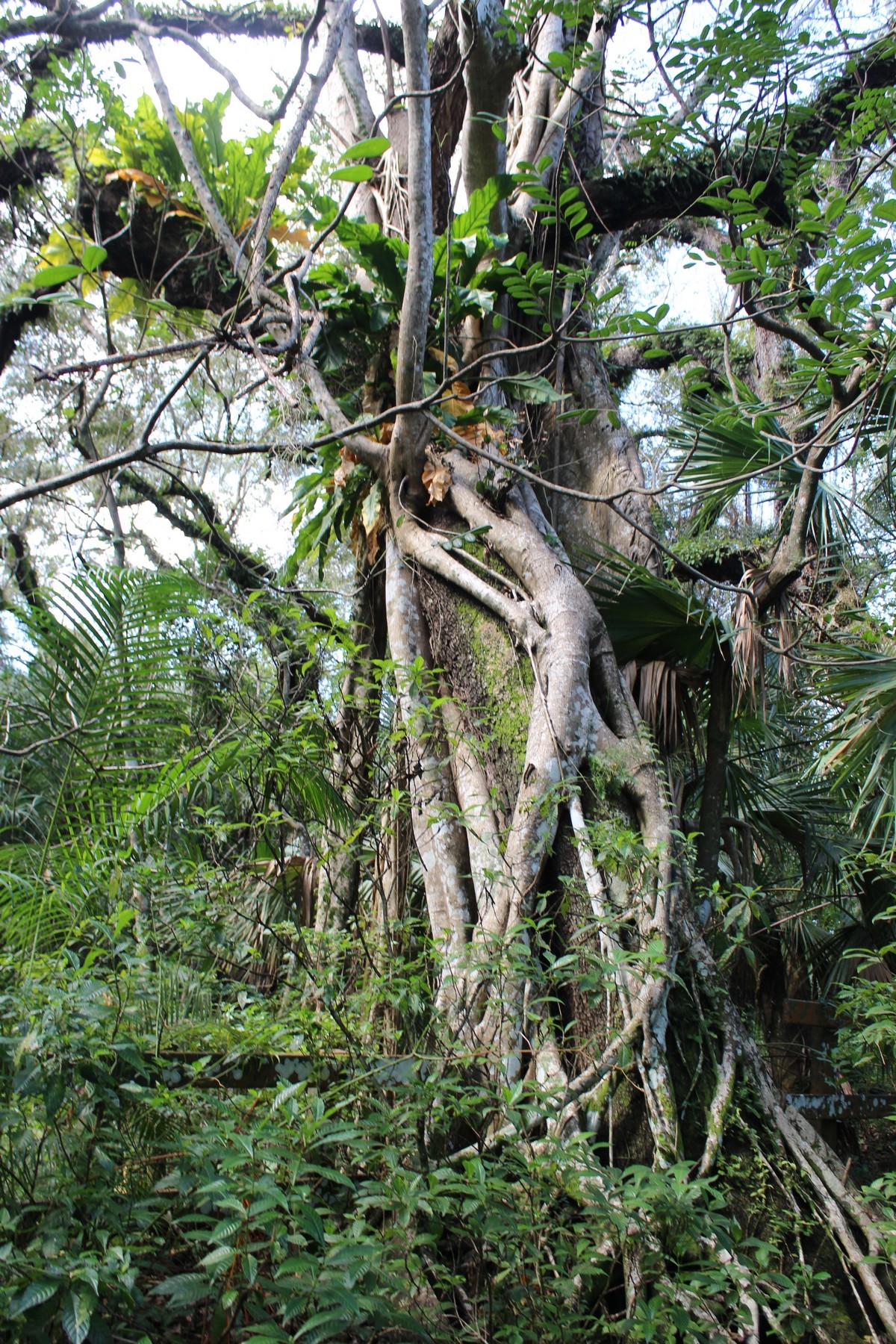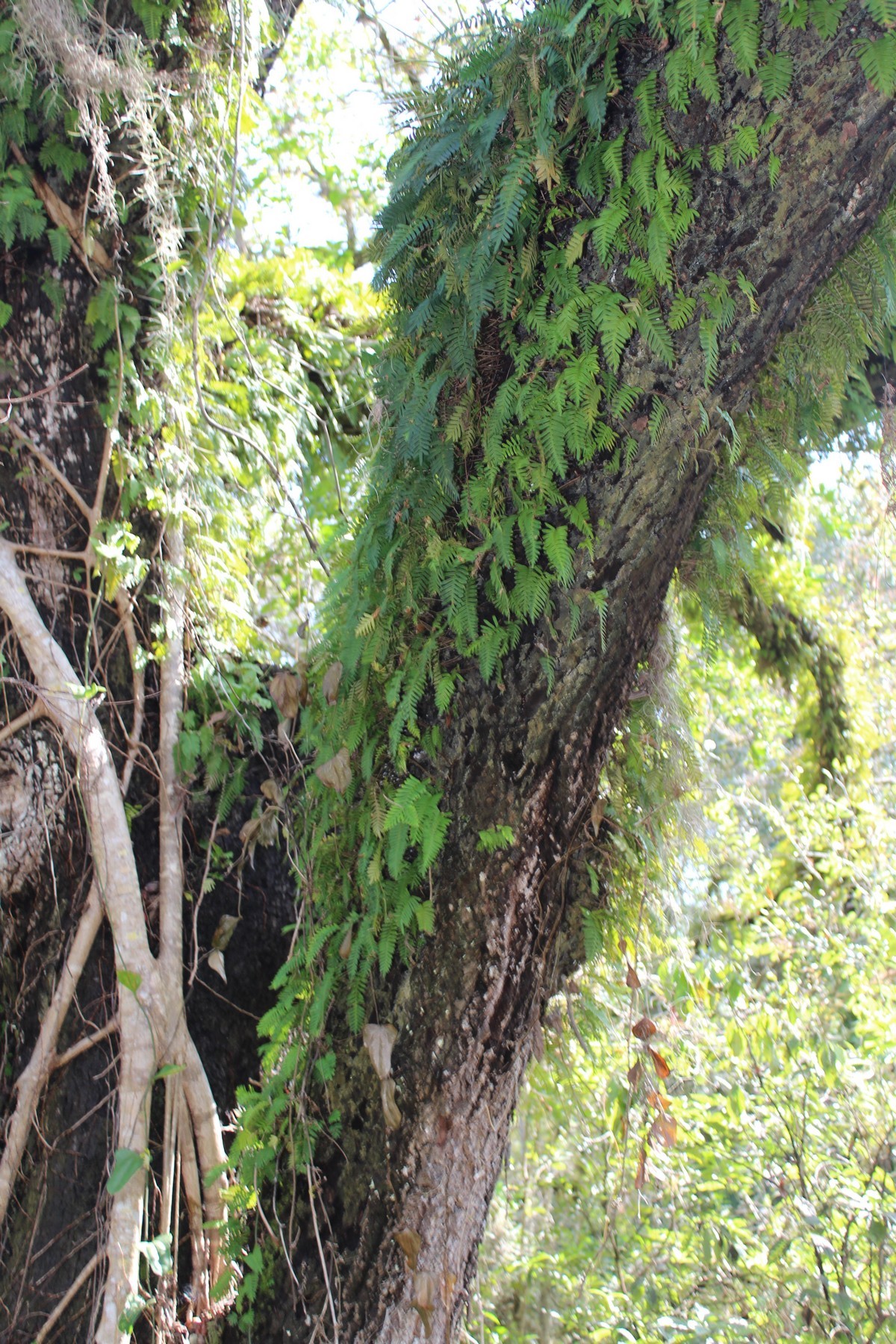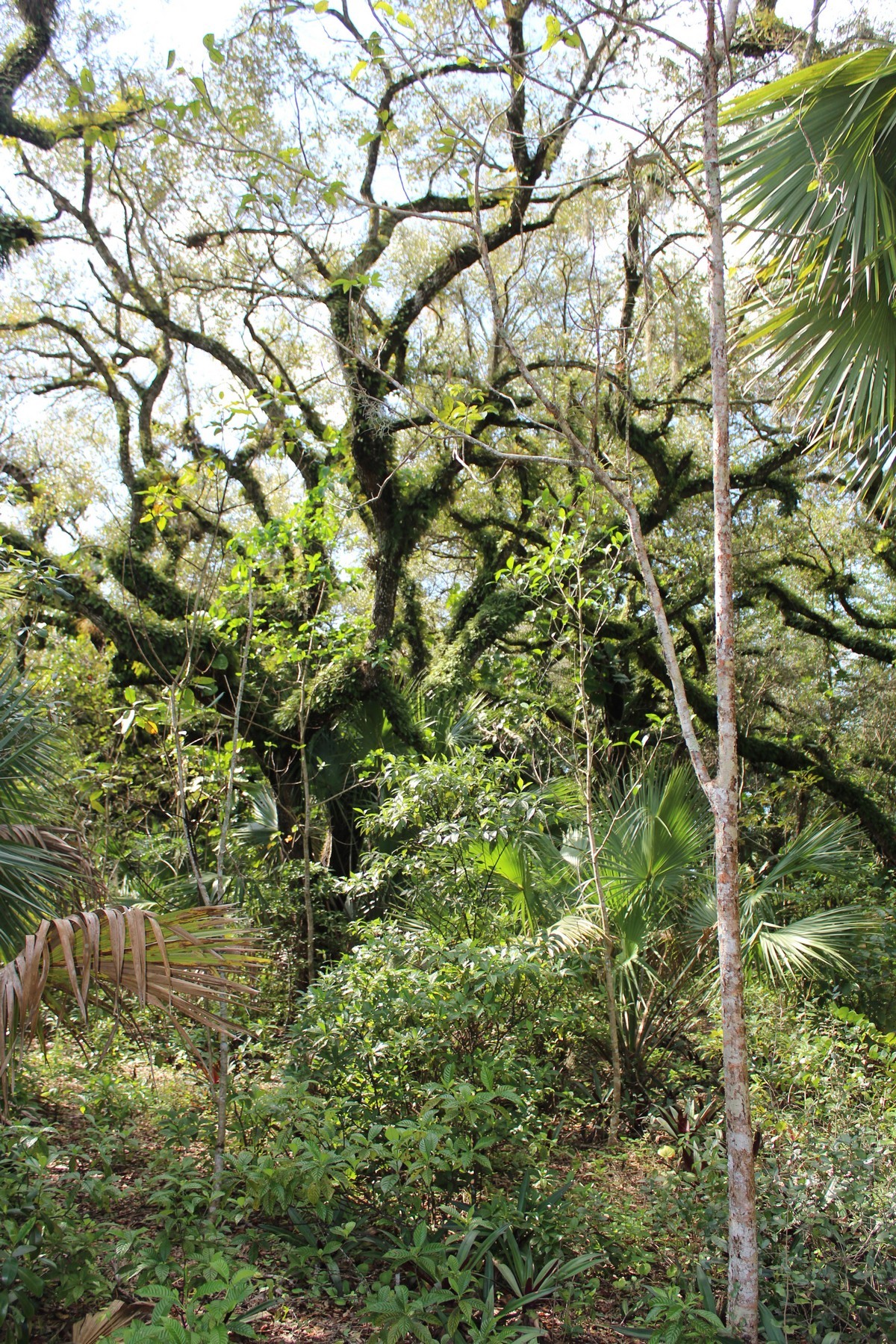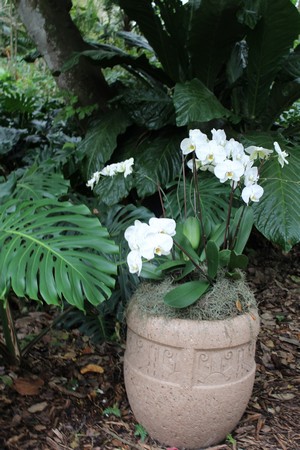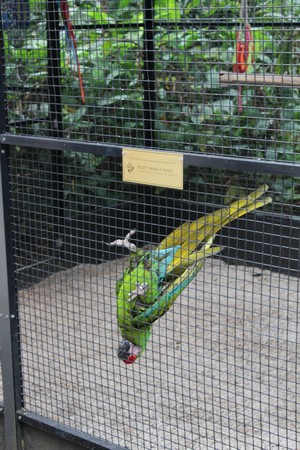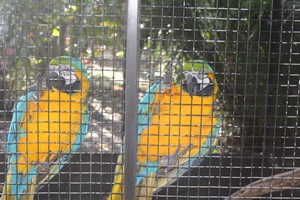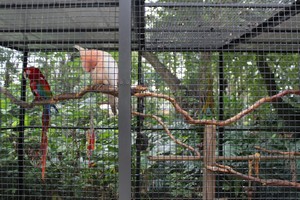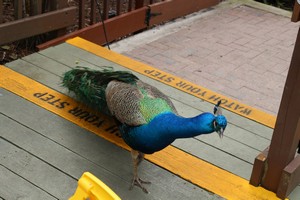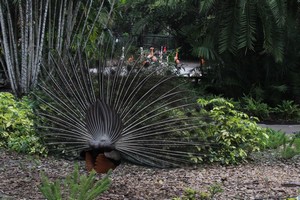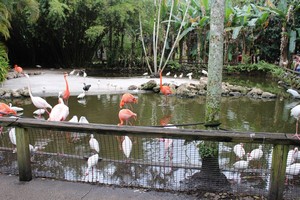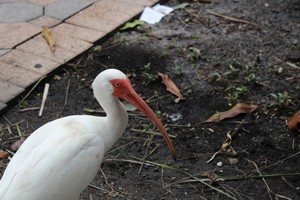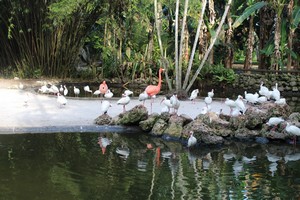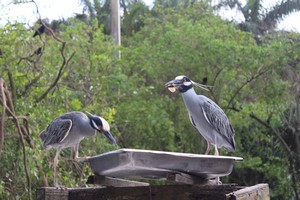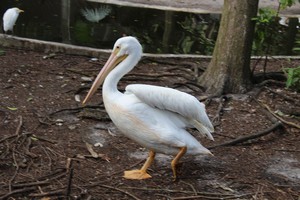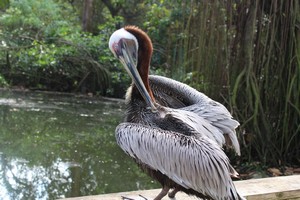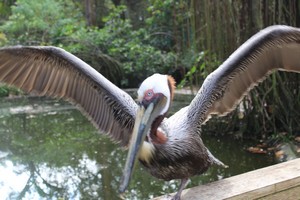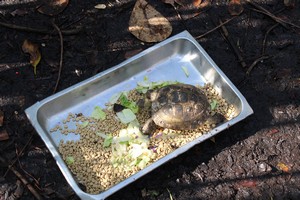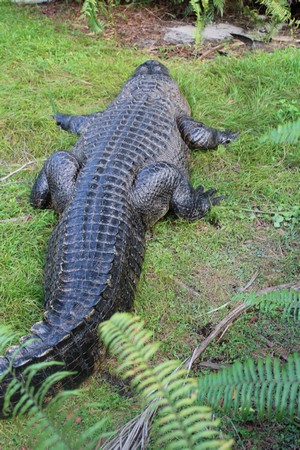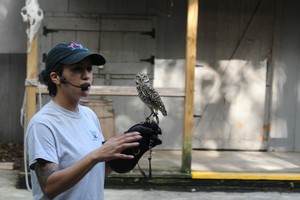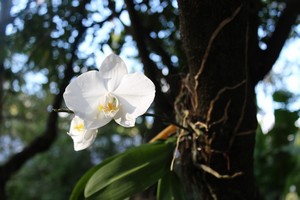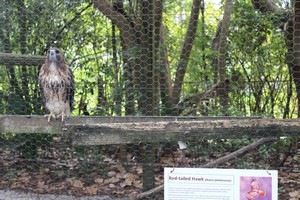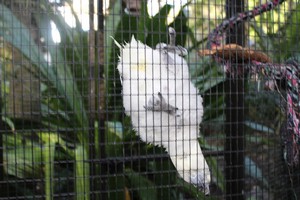Long Key Nature Preserve
As I said, Jenny picks the itinerary. It was Jenny who, when we first met, introduced me to the concept of walking as a social activity. So today, we were to drive a short distance for a couple of long walks. Our first destination was a 10 mile drive to the Long Key Nature Preserve. This was the site of a theme park called Pioneer City that was built in the 50s at the same time as Disneyworld, with the intention of being its competitor. It went bust after only a couple of years of operation, and was turned over to the Broward County Parks and Recreation Department, and converted to a public park.
|
||
I'm a northern boy. This is all alien landscape to me. I'm used to maples and oaks, and ash in cool, shady, hilly forests without much understory. The nature that is being preserved at Long Key seems somehow unnatural to me. The paths through the park are either boardwalks raised slightly off the boggy ground as Photos 10 and 11, or cleared paths of packed earth. In either case they are carefully fenced throughout their length, presumably to prevent the unwary wanderer from getting lost, disappearing in quicksand, or being eaten by alligators. The fauna in the preserve have become acclimated to humans, as evidenced by the crow in Photo 14, nonchalantly perching in branches no more than an arm's length above my head, oblivious of any danger. .
Flamingo Gardens
Not a mile from Long Key Nature Preserve was the next stop on our itinerary, Flamingo Gardens. This was a nature park of a very different nature from Long Key. Long Key was a free-to-the-public park seemingly aimed at local the residents, with a minimum of maintenance and fanfare. Flamingo Gardens was aimed squarely at the touristas, and somewhat pricey. They had a whole army of grounds keepers and gardeners and animal keepers and veterinarians and tram drivers and who knows what-all else behind the doors that said, "Staff Only". Well, what the hell? We were touristas, and on vacation. And as I said, vacation dollars were like another currency.
* My thanks to Amy Hopkins for identifying the species;
One of the quandaries I always encounter in writing up these travelogues is how much attention I devote to being on vacation, as opposed to how much I devote to documenting that vacation. This time, I fear I leaned more towards the former. I tended to forget that I had a camera dangling from my neck, and was less discerning as to what I would choose to photograph, and what to leave to my memory. (And probably forget.) As I walked through the doors into the garden, I immediately shot the first thing that caught my eye (photo 20), and then ignored a lot of other more interesting stuff. I was drawn to the birds on display, some in cages, some free to roam the grounds, and some in an enormous walk-through aviary with netting 30 or 40 feet high over the top. The cages were all large enough to permit the birds to fly to one extent or another. But they tended to make it difficult to photograph their inmates. On auto-focus, the camera tended to focus on the cage wires, rendering the birds inside all fuzzy and out of focus. And if I set the camera to manual focus, the subjects of my photos were obscured by the out-of-focus cage wires between them and my camera.
I've always liked the birds in the parrot family, parrots (photo 21), macaws (photo 22), cockatoos (photo 23). They tend to acclimatize with humans, and can be very sociable. Some species that mate for life, will sometimes bond to a particular human as they would to a mate, and consequently will not breed. The gold and blue macaws in photo 22 were obviously a mated pair, and were constantly close to each other, often nuzzling each other or duplicating each other's stance and movement. Quite charming. The place was lousy with peacocks (photos 24, 25, & 26. They had free run of the grounds. The rear view of a peacock on display (photo 26) is one I've not often seen, and at first glance, I did not immediately recognize it for what it was.
It was well past noon by the time we got to the Gardens, and I was hungry. The scenery around the outdoor Cafe (Photo 27) was a lot better than its food. Apparently the ibises (Photos 28 and 29) that roamed freely were not so fussy as I, for they would snatch the hot dog of the unwary right off his plate if given the chance. The flamingos (This was Flamingo Gardens, after all.) were either more wary of people or more fussy about food, as they confined themselves to the pond.
There was a convenient tram that took us on a tour of the grounds that lasted about 25 minutes, and was quite interesting. So much so that I again forgot about my camera, and took no pictures on the ride except Photo 30 of one of the tram passengers that was even more fascinated than I.
Walk-In Aviary
* My thanks to Amy Hopkins for identifying the species.
As I had mentioned earlier, there was an enormous walk-in aviary. This was an area, I would guess covering a full acre or more, enclosed by netting on all sides, and across the top, maybe 40 feet high. It was accessible via an airlock (Well, not an airlock since it too was walled by netting. More accurately, a bird-lock.) with spring-closed doors into the aviary and out to the outside world. The birds and other critters had free run of the place, but the people were constrained to paths. It was wonderful to observe the birds from up close, while the birds themselves were free to fly. The brown pelican in Photos 33 and 34 was so used to people that I was able to take those shots from arm's length away. Food trays placed close to the walking paths were provided for the birds in order to attract them within easy view. However Photo 35 shows an interloper in one of those trays. It would have been interesting to see how it got in and out of the tray.
Further Wanderings
|
||
|
* My thanks to Amy Hopkins for identifying the species.
Here are some random photos of other things that attracted my attention strongly enough to photograph them:
Photo 36: This tightly packed grove of trees is actually a single banyon tree. They drop feelers from their branches to the ground, which then take root and then thicken into trunks.
Photo 37: Hey, it's Florida. They gotta have an alligator
Photo 38: There was a small amphitheater, where periodically docents would give short lectures on some of the animals kept at Flamingo Gardens. In particular, this one was on a pigmy owl. Well presented, informative, and entertaining.
Photo 39: I don't know what kind of flower that is, I just happened to be passing by, and there it was at eye level. I thought, "Gee, that's pretty.", and snapped the picture.
Photo 40: This red tail hawk was injured, and unable to fend for itself in the wild. So they have it here on display. If you look at the full page image, you will see the problems I mentioned earlier of photographing critters inside those mesh cages.
Photo 41. As I also mentioned earlier, cockatoos, and other birds of the parrot family can be quite sociable with humans. (There was one I saw in a facility called "Bird World" in England many years ago that perched on the lip of a food tray hooked onto the cage mesh, and presented its head for me to scritch through the bars. After many minutes of that, it dipped its beak into the food tray, picked up a piece of melon, and thrust it through the bars to me as a thank you gift!) This one was behaving similarly to me, and when I put a finger through the bars to scritch its head, it ever so gently grasped my finger with its beak, and licked my finger tip with its tongue. I said to Jenny, "Quick! Take my camera and get a picture of this!" And that's when my camera battery chose to die. (Photo 42)
It was just about 20 minutes to closing time, when Jenny suddenly realized she had lost her wallet. We quickly retraced any steps we could remember, going back to the Cafe and the Welcome Center, looking for places she might have had her wallet out, but to no avail. That put a bit of a damper on the day, and we headed back to the Holiday Inn. We grabbed a couple of sandwiches from the Wawa right next to the hotel, and hit the rack.
